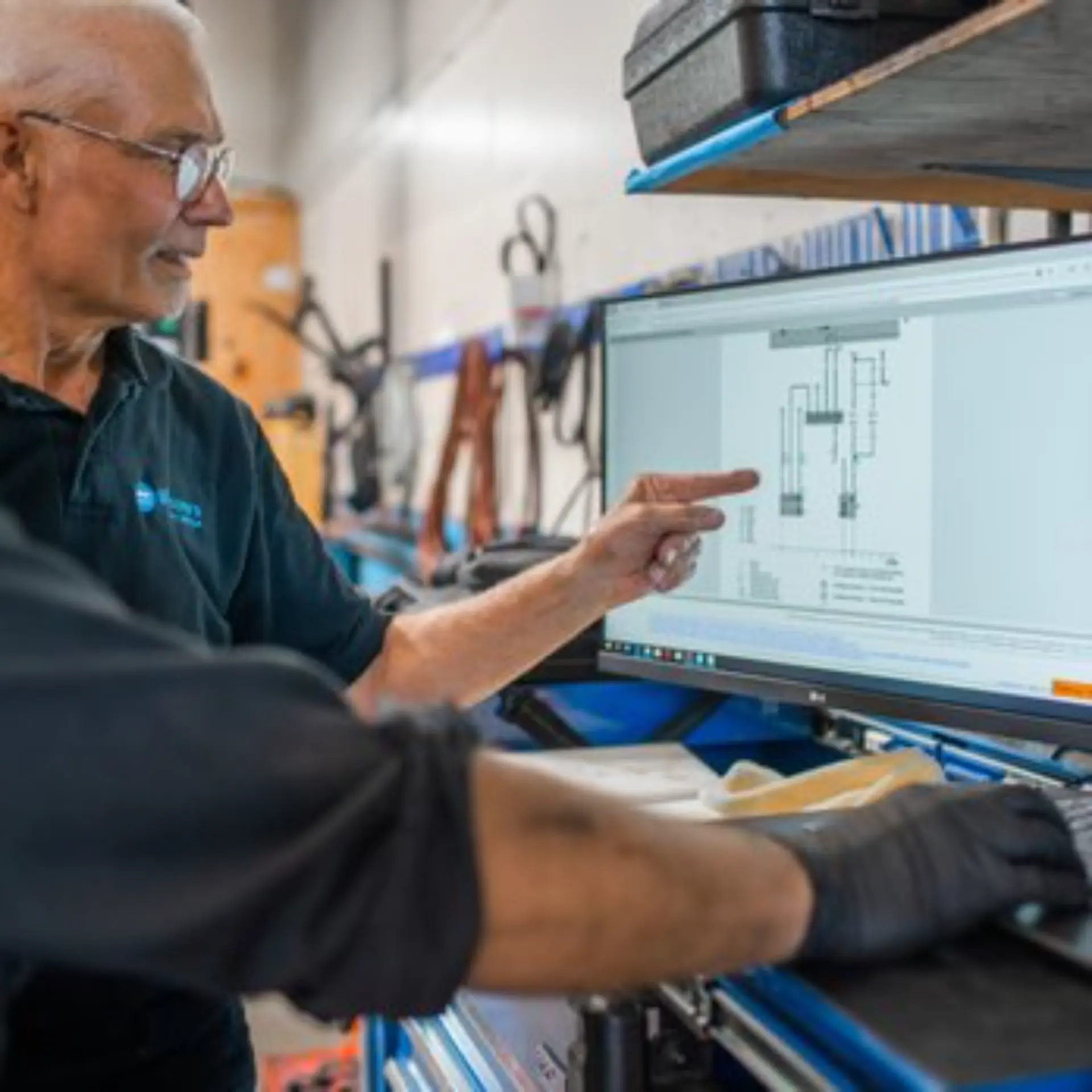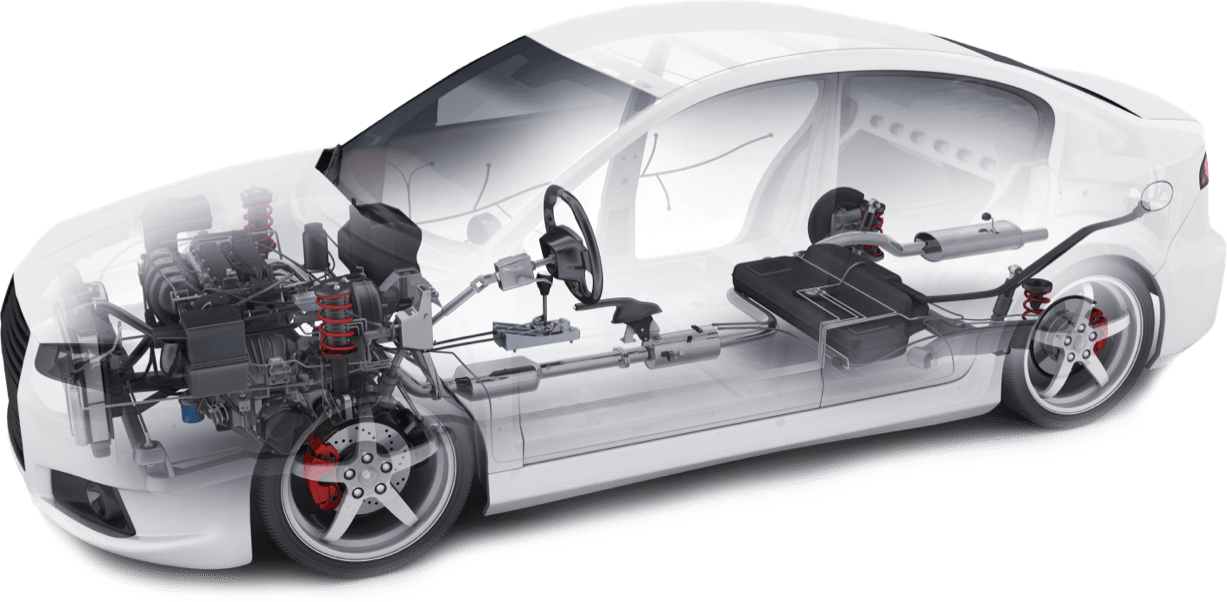
It can be tricky to tell whether your car needs a break or immediate attention from a mechanic. If you notice any of the signs we’ve listed below, we strongly recommend having your vehicle checked by a professional mechanic sooner rather than later. Taking action early can help you avoid more severe damage and expensive repairs later on.
Is your car stalling or struggling to accelerate, no matter how hard you press the gas pedal? This isn’t just inconvenient-it could indicate serious issues like a failing fuel pump or ignition problems, which are hazardous to face while driving. Don’t wait and hope the problem resolves itself. Bring your vehicle in for a check up from our team of experts.
If your steering wheel becomes difficult to maneuver or your turns aren’t as smooth as they used to be, it could signal an issue with essential steering components. Possible reasons could be low power steering fluid or other mechanical failures. It’s crucial to address any problems that impact your ability to steer the car safely-seek immediate professional assistance at an auto repair shop.
If your vehicle is leaving behind puddles of liquid, it’s a sign you should investigate further. While water from air conditioning condensation is usually harmless, other fluids like oil, transmission fluid (red or brown), coolant (blue, yellow, green), power steering fluid, or brake fluid (thick but clear) indicate a potential leak in one of your car’s critical systems. Addressing these leaks promptly can prevent further damage and ensure optimal performance. It’s advisable to have these issues inspected and remedied by a specialist.
Brakes naturally wear down over time and if you notice them losing effectiveness or making unusual noises, it’s a sign they may need attention. Screeching or squealing often indicates that the brake pads are worn and require replacement. Additionally, if your brakes shake or vibrate, this could point to a range of issues, from further wear on the pads to problems with the brake fluid or alignment.
If you’ve noticed your car’s ride has become notably less smooth in the past few months, it might be time for a trip to the auto shop. A shaky or vibrating ride, especially at higher speeds, often stems from wheel or alignment issues.
Even after a proper wheel alignment, wheels can gradually shift, influenced by normal wear and tear or sudden incidents like accidents or unexpected bumps. Realignment is a straightforward procedure that can swiftly address the issue.
Engines are meant to run smoothly, so if yours starts to sound louder with age, that’s normal. But if you hear sudden, unusual noises like grinding, popping, or growling-or if starting your engine becomes a struggle-it’s a good idea to visit your local auto shop. Catching these warning signs early can help ensure your car stays in top shape!
Modern vehicles are equipped with engine diagnostic or check engine lights that sometimes activate not because of an immediate issue, but as reminders for routine checkups after a certain mileage has been reached.
In some instances, a glitch in the car’s computer system might even trigger these lights without any actual problem. However, when these lights come on alongside other symptoms such as poor performance or strange noises, it’s wise to get your car checked by a professional to ensure everything is running smoothly.
If you notice your exhaust emitting black smoke or strange odors, it might be time to check in with a mechanic. This could indicate something like a clogged filter or another issue with your car’s systems, possibly even the catalytic converter. It’s always a good idea to get these things looked at to keep your car running smoothly.
Stop by Gilmore’s Auto Service located at 2151 N Broadway in Walnut Creek, CA or call (925) 208-4196 to talk to one of our friendly and professional technicians.

The traditional core of the automotive industry, known as the “tune-up,” has undergone significant changes over time. Despite some misconceptions, contemporary vehicles still require tune-ups for optimal performance.
With the rapid advancement of technology, the processes involved in carrying out a conventional tune-up have undergone a substantial transformation. Advanced ignition and fuel systems have become standard, incorporating one or more onboard computers to regulate essential engine and transmission functions.
Failure to maintain the vehicle appropriately will hinder your ability to reach your desired destination. In the 21st Century Tune-up for modern vehicles, it is essential to inspect the following systems: battery, charging and starting engine, mechanical powertrain control (including onboard diagnostic checks), fuel ignition, and emissions.
To ensure optimal performance, fuel efficiency, and reduced emissions, the Car Care Council advises motorists to invest time in understanding their vehicles. Familiarize yourself thoroughly with the operation of all systems by studying the owner’s manual. Pay close attention to indicator lights and instruments.
Some of the following tips can be performed by any do-it-yourselfer; others require the skilled hands of a professional auto technician.
The heater and defroster must be in good working condition for passenger comfort and driver visibility. Newer models have a cabin air filter that should be replaced periodically. Check your owner’s manual for the location and replacement interval.
The only accurate way to detect a weak battery is with professional equipment. Routine care: Scrape away corrosion from posts and cable connections; clean all surfaces; re-tighten all connections. If battery caps are removable, check fluid level monthly. Avoid contact with corrosive deposits and battery acid. Wear eye protection and rubber gloves.
Worn tires will be of little use in winter weather. Examine tires for remaining tread life, uneven wearing, and cupping; check the sidewalls for cuts and nicks. Check tire pressures once a month. Check the tires when they are cold, before driving for any distance. Rotate as recommended. Don’t forget your spare, and be sure the jack is in good condition.
Summer’s heat, dust, and stop-and-go traffic, will take their toll on your vehicle. Add the effects of last winter, and you could be poised for a breakdown. You can lessen the odds of mechanical failure through periodic maintenance. Your vehicle should last longer and command a higher resale price, too! Some of the following tips are easy to do; others require a skilled auto technician.
A marginally operating system will fail in hot weather. Have the system examined by a qualified technician. Newer models have cabin air filters that clean the air entering the heating and air conditioning system. Check your owner’s manual for location and replacement interval.
The greatest cause of summer breakdowns is overheating. The cooling system should be completely flushed and refilled about every 24 months. The level, condition, and concentration of the coolant should be checked periodically. (A 50/50 mix of anti-freeze and water is usually recommended.) DIYers, never remove the radiator cap until the engine has thoroughly cooled! The tightness and condition of drive belts, clamps, and hoses should be checked by a pro.
Brakes should be inspected as recommended in your manual, or sooner if you notice pulsations, grabbing, noises, or longer stopping distance. Minor brake problems should be corrected promptly.
